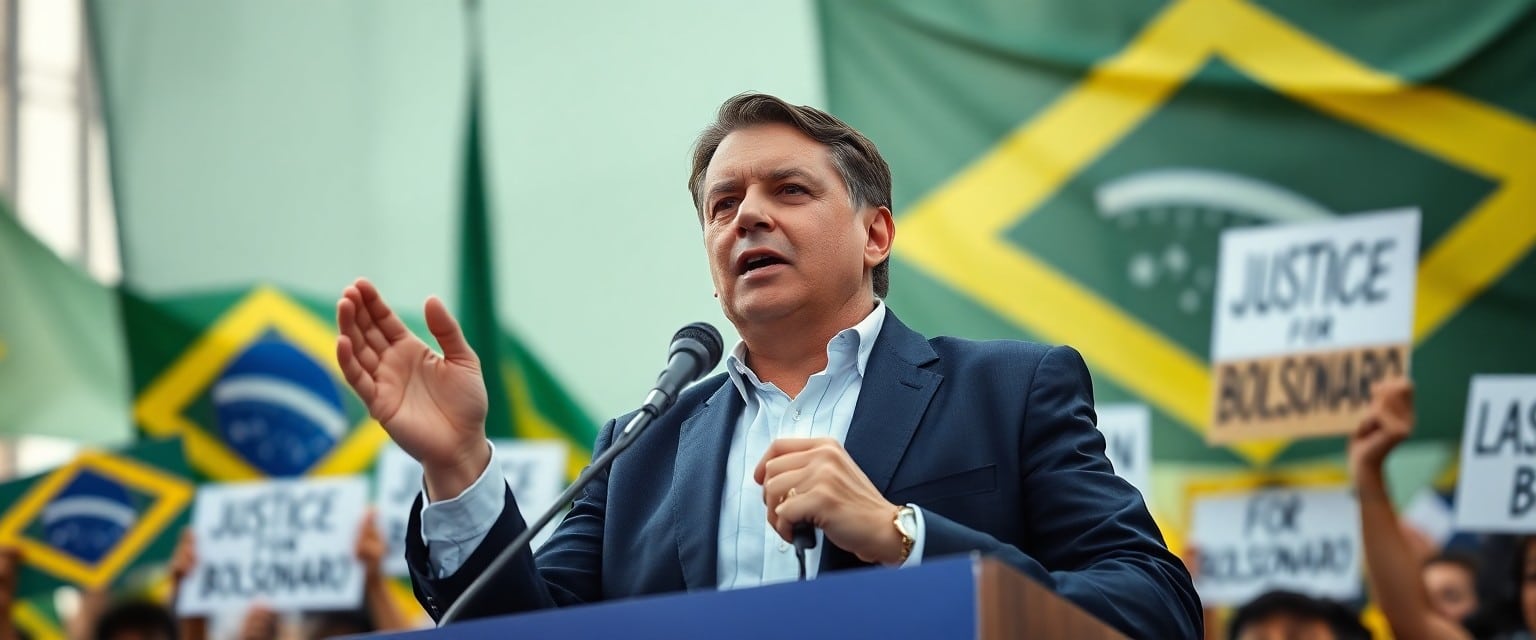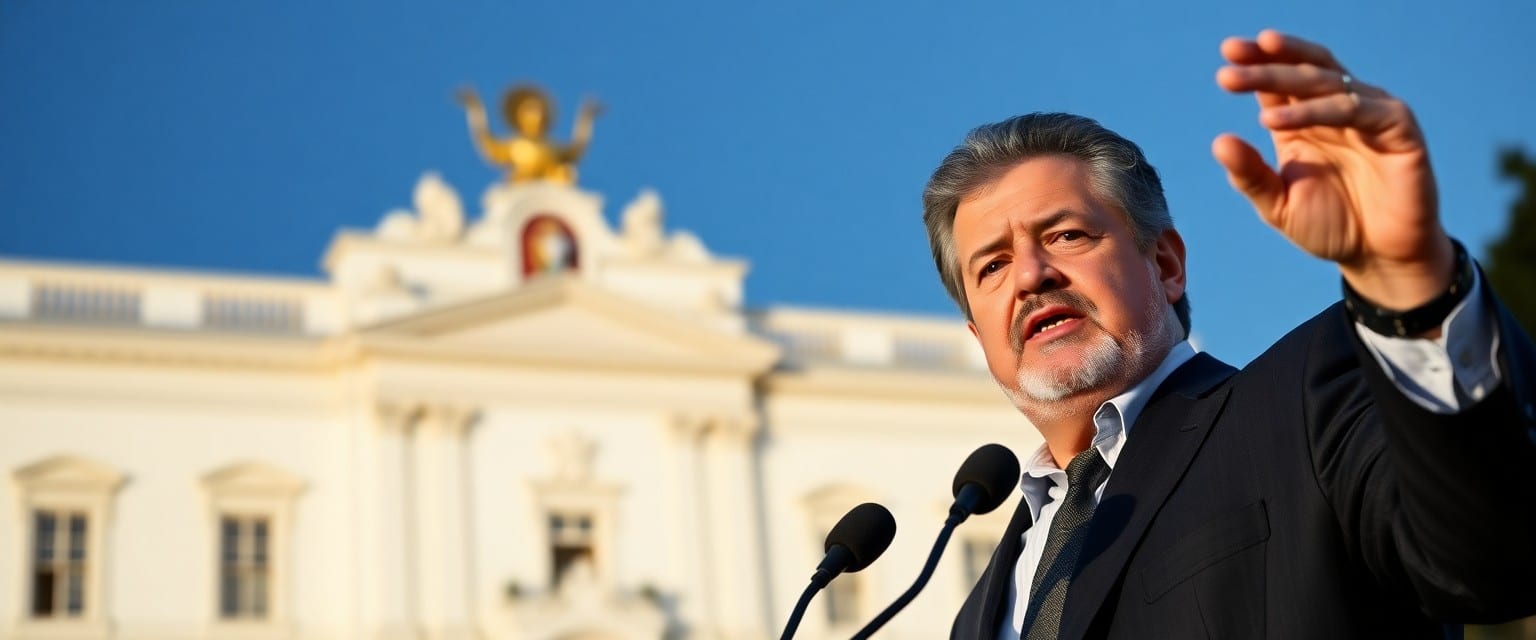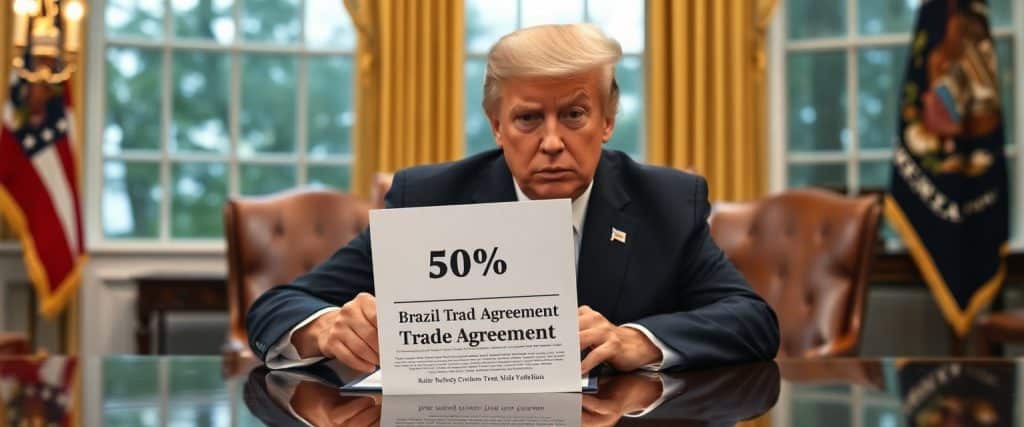It’s important for you to understand the latest trade tensions as US President Donald Trump has threatened Brazil with a 50% tariff starting August 1 if it doesn’t halt the ongoing trial against former president Jair Bolsonaro, which Trump calls a “witch hunt.” This escalation could severely impact key US exports like aircraft and industrial machinery, while Brazil has vowed to respond under its Law of Economic Reciprocity. You should keep an eye on how these developments may affect trade relations and industries on both sides.
The Tariff Threat: Context and Implications
The 50% tariff threat on Brazil signals a sharp escalation in Trump’s trade tactics, targeting the Bolsonaro trial as leverage. Unlike other nations on the tariff list, Brazil runs a $6.8 billion trade deficit with the US, exporting less than it imports. This shifts the dynamic from pure trade retaliation toward political pressure, intertwining diplomatic tensions with economic consequences. The looming August 1 deadline puts you—and global markets—on alert for potential disruption in key sectors like aerospace and machinery if negotiations falter or Brazil launches retaliatory tariffs.
Trump’s Letter to Lula: Claims and Consequences
Trump’s letter accuses Lula of a “Witch Hunt” against Bolsonaro, framing the trial as a threat to US interests tied to Bolsonaro’s legacy. He offers a conditional reprieve: the tariff won’t apply if Brazilian companies manufacture in the US, pushing for reshoring production. This mixes political interference with economic incentives, while Lula’s vow to retaliate under Brazil’s Law of Economic Reciprocity hints at a potential tariff battle that could strain bilateral relations and complicate future trade talks.
Economic Impact of a 50% Tariff on Brazil
A 50% US tariff would hit Brazilian exports hard, especially in key goods like aircraft parts, fuels, and industrial machinery. These tariffs would disrupt established supply chains and increase costs for American manufacturers relying on Brazilian components. For you, this could mean price hikes on products and reduced competitiveness for US industries linked to trade with Brazil. The tariff could provoke Brazil to impose retaliatory measures, escalating tensions and pushing both economies toward costly trade barriers.

Brazil’s Stance: Sovereignty and Reciprocity
Brazil has responded firmly to Trump’s tariff threat, emphasizing its status as a sovereign nation with independent institutions. President Lula made clear that Brazil will not tolerate external pressure or interference, stressing that any unilateral tariff increase by the US would be met with measures grounded in the country’s Law of Economic Reciprocity. This stance signals Brazil’s readiness to defend its economic interests and maintain balanced trade relations despite growing tensions.
Lula’s Response to Tariff Threats
Lula rejected Trump’s threats outright, asserting on X that Brazil “will not accept any form of tutelage.” He highlighted the country’s right to self-governance and warned that any increase in tariffs by the US would provoke a proportional response. Lula’s reaction underscores Brazil’s refusal to back down and willingness to engage in reciprocal trade actions to protect its industries and political sovereignty.
Brazil’s Law of Economic Reciprocity Explained
The Law of Economic Reciprocity mandates that Brazil applies equivalent trade measures in response to unilateral actions by other countries. This means if the US imposes higher tariffs, Brazil is legally obliged to enact matching tariffs or other trade restrictions, aiming to restore balance and fairness in bilateral commerce.
This law ensures Brazil can defend itself against protectionist policies by treating foreign tariffs as grounds for immediate countermeasures. It has origins in Brazil’s historical negotiations to protect local industries and prevent trade distortions. Under this framework, Brazil’s government evaluates the economic impact of foreign tariffs and determines proportional responses designed to safeguard its exporters, especially in sectors vulnerable to US trade barriers. For you following the dispute, this law acts as a strategic tool Brazil uses to maintain leverage in ongoing trade tensions and preserve its position in global markets.
A Pattern of Tariff Politics: Trump’s Strategy
Trump’s tariff threats consistently aim to leverage economic pressure for political or trade concessions. By targeting countries with significant trade imbalances or policies obstructing US exports, he pushes a narrative of “reciprocity” to boost domestic manufacturing. You see this clearly in his offers to exempt tariffs if companies build or manufacture in the US, turning tariffs into incentives for reshoring production. This strategy blends economic nationalism with geopolitical signaling, as seen not only in Brazil but across nations ranging from Colombia to the Philippines, shaping a wider pattern of aggressive trade diplomacy.
Historical Context of Tariff Threats
Throughout his tenure and beyond, Trump has employed tariffs as a tool to address perceived unfair trade practices and national security concerns. Earlier moves, like imposing tariffs on Mexico, Canada, and China tied to migration and fentanyl issues, illustrate a recurring tactic of coupling economic measures with policy demands. The recent round of letters and tariff threats, unveiled since April, expands on this approach by involving 22 countries and raising rates up to 50%. Past episodes, such as the Colombia deportee deal, show how tariffs have pressured countries into compliance.
Comparison with Other Countries Affected
Brazil stands out due to its trade deficit favoring the US and the unique political backdrop involving Bolsonaro’s trial. Other countries generally face tariffs over US trade deficits or obstructive trade policies. Rates vary, with nations like the Philippines seeing a rise to 20%, Sri Lanka and Moldova facing reductions, and Algeria maintaining a steady 30%. Unlike most, Trump framed Brazil’s tariff threat around political issues rather than just trade imbalance, indicating a nuanced escalation in his tariff playbook.
| Country | Tariff Rate and Context |
|---|---|
| Brazil | 50% tariff threat tied to Bolsonaro’s trial and political dispute |
| Philippines | 20% tariff, increased from April; expressed official concern, ongoing negotiations |
| Sri Lanka | Reduced tariff rate from initial April announcement; trade imbalance cited |
| Moldova | Lowered tariff rate; trade deficit focus |
| Algeria | Steady 30% tariff, consistent with April levels; trade policies under scrutiny |
This variation highlights how Trump calibrates tariffs both as leverage on longstanding trade grievances and as responses to specific political situations, like Brazil’s judicial actions. For your understanding, the Brazilian case marks an unprecedented intertwining of US trade policy with foreign domestic politics—setting it apart from other affected countries primarily targeted for economic reasons.
Trade Negotiations: A Path Forward?
As the August 1 deadline looms, ongoing talks between the US and its trading partners remain strained but active. While Trump’s coercive tariff threats set a high-stakes stage, countries like Indonesia and the Philippines continue to seek negotiated solutions, aiming to avoid punitive tariffs while protecting national interests. You’re witnessing a complex balancing act where economic pressure collides with diplomatic maneuvering, leaving the door open for last-minute deals that could reshape trade dynamics and avert a full tariff escalation.
Potential Outcomes of Extended Negotiations
If negotiations extend beyond August 1, you may see a mix of partial agreements and tariff adjustments, with some countries securing reduced rates or phased implementations. Conversely, failure to resolve key issues—such as trade deficits or domestic policy grievances—could trigger the threatened tariff hikes, disrupting supply chains and escalating economic tensions. This limbo period gives both sides leverage, as Trump’s stance suggests tariffs might be avoided if manufacturing shifts to US soil.
Insights from Economic Analysts
JPMorgan economists find Trump’s 50% tariff threat on Brazil particularly unexpected, noting it diverges from earlier tariff logic focused mainly on trade deficits. Market optimism hinges on the possibility these tariffs may never be enforced, but analysts caution the uncertainty fuels volatility. You should weigh such assessments carefully as they highlight both the disruptive potential and the strategic ambiguity that characterize these ongoing trade tensions.

The Broader Economic Landscape: Copper and Beyond
Parallel to escalating tariff threats on Brazil, the announcement of a 50% tariff on copper imports underlines a broader strategy targeting key materials linked to national security and industrial dominance. Copper’s imperative role in semiconductors, defense equipment, and infrastructure indicates these moves could ripple across multiple sectors. By focusing on raw materials like copper, the US aims to reshape trade flows and encourage domestic manufacturing, but you should anticipate rising costs and market volatility as these policies unfold.
The Announcement of Copper Tariffs
Trump declared a 50% tariff on copper imports effective August 1, 2025, citing a “robust NATIONAL SECURITY ASSESSMENT.” Copper ranks as the Department of Defense’s second most used material, making this tariff part of broader efforts to rebuild America’s copper industry. With half of US copper needs currently imported mainly from China, Chile, Japan, and Congo, the tariff seeks to reverse declines attributed to previous administrations and stimulate domestic production amid concerns over supply chain vulnerabilities.
Short-Term Market Reactions and Long-Term Effects
Copper prices surged sharply after tariff announcements, hitting a record $5.69 per pound, illustrating immediate market sensitivity. While some analysts express skepticism about the tariff’s ability to quickly revive domestic copper mining, they warn it will drive up costs for manufacturers reliant on copper, potentially slowing infrastructure projects and increasing consumer prices over time. Your exposure to sectors like electronics, batteries, and defense industrials means these shifts warrant close monitoring.
The initial price spike reflects market attempts to price in supply disruptions and increased import costs. However, structural shortages remain, as the US imports over half of its copper demand, primarily from South America, with no quick remedy in sight. Analysts like Ole Hansen warn this tariff acts as a “massive tax” on copper consumers, potentially increasing the cost of US manufacturing and infrastructure investments. Your decisions—whether in investment or supply chain planning—need to account for these evolving dynamics and the risk of inflationary pressures tied directly to materials critical for economic growth and national security.
Summing up
With this in mind, you should be aware that Trump’s threat of a 50% tariff on Brazilian goods is a direct response to Brazil’s ongoing trial of former President Bolsonaro, whom Trump supports. If Brazil proceeds, these tariffs could seriously impact trade, especially in industries where the US exports heavily. The situation underscores the unpredictable nature of trade relations and the potential consequences when political disputes intersect with economic policies. Understanding these dynamics will help you gauge how international tensions might affect markets and bilateral trade moving forward.
Frequently Asked Questions
Why did President Trump impose a 50% tariff on Brazilian imports?
President Trump announced a 50% tariff on Brazilian imports, effective August 1, 2025, citing the prosecution of former President Jair Bolsonaro as a “witch hunt.” He criticized Brazil’s treatment of Bolsonaro and alleged attacks on free speech, particularly targeting U.S.-based platforms like Truth Social and Rumble. The tariff is the steepest among recent reciprocal tariffs Trump proposed in letters to world leaders. Source
How did Brazil respond to the U.S. tariff threat?
Brazilian President Luiz Inácio Lula da Silva rejected President Trump’s demands to halt the legal proceedings against Bolsonaro, emphasizing Brazil’s sovereignty and judicial independence. He vowed to retaliate against any new tariffs by invoking Brazil’s Economic Reciprocity Act, which allows the country to impose countermeasures against foreign trade sanctions. Source
What are the potential economic impacts of the 50% tariff?
The 50% tariff on Brazilian imports could significantly affect the $92 billion trade relationship between the U.S. and Brazil. Key Brazilian exports to the U.S. include coffee, steel, and orange juice. The move has already led to a decline in the Brazilian real by over 2%. Analysts warn that the tariff could lead to higher prices for consumers and disrupt supply chains. Source
What other countries are affected by Trump’s new tariffs?
In addition to Brazil, President Trump announced planned tariffs targeting exports from seven other countries—Philippines, Brunei, Moldova, Algeria, Iraq, Libya, and Sri Lanka—unless they reach trade agreements with the U.S. by August 1, 2025. Tariffs on these nations range from 20% to 30%. These announcements are part of Trump’s broader “Liberation Day” trade initiative, setting baseline and customized tariffs to address longstanding trade deficits and national security concerns. Source
How have international observers reacted to the tariff announcement?
International observers have expressed concern over the potential escalation of trade tensions. Some analysts view the 50% tariff as an overreach, while others argue that it reflects a broader trend of protectionist policies under the Trump administration. The move has sparked debates about the balance between national sovereignty and international trade norms. Source

